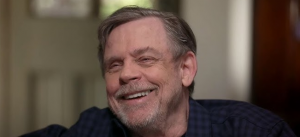A decade post-diplomatic restoration, Cuba confronts severe economic challenges amid a mass exodus of citizens, reflecting a stark contrast to initial optimism.
**From Hope to Despair: The Decline of Cuba's Dreams in a Decade**

**From Hope to Despair: The Decline of Cuba's Dreams in a Decade**
A look back at the shift in Cuba's fortunes following the thaw in U.S.-Cuban relations, detailing the current struggles faced by the nation.
After a historic normalization of relations between the United States and Cuba initiated under President Barack Obama, many anticipated a transformation for the island nation. However, ten years later, Cuba finds itself grappling with one of its most challenging periods since the Cuban Revolution led by Fidel Castro.
Once vibrant plazas filled with American tourists capturing moments with iconic symbols of Cuban culture, such as the image of Che Guevara, now present a starkly different picture. The streets where classic cars—once a thriving part of the tourism economy—stood vibrant with life are now eerily quiet. Drivers like Luis Manuel Perez, aged 57, illustrate the current state of affairs, often waiting for hours in hopes of attracting a customer, but facing long odds in a drastically reduced tourism landscape.
The thaw in relations brought about a wave of initial optimism. Investments flowed in, and for a brief period, hope surged high. Major U.S. companies including Google and AT&T engaged with the Cuban economy, promising potential prosperity. However, a confluence of adverse events including tightened U.S. policies under the Trump administration, domestic mismanagement, and the severe impacts of the COVID-19 pandemic culminated in an economic collapse that left the current situation dire.
As Cuba's economy falters, citizens increasingly feel its effects through daily struggles characterized by food shortages, power outages, and long wait times at stores that often run low on supplies. Moreover, many are opting to leave, seeking better opportunities abroad, resulting in a mass exodus that underscores the ongoing crisis faced by the nation.
With hopes once pinned on this restoration of relations, the prospects for a revitalized Cuba seem dim, and the dreams that fueled optimism ten years ago appear to have faded into disillusionment.
Once vibrant plazas filled with American tourists capturing moments with iconic symbols of Cuban culture, such as the image of Che Guevara, now present a starkly different picture. The streets where classic cars—once a thriving part of the tourism economy—stood vibrant with life are now eerily quiet. Drivers like Luis Manuel Perez, aged 57, illustrate the current state of affairs, often waiting for hours in hopes of attracting a customer, but facing long odds in a drastically reduced tourism landscape.
The thaw in relations brought about a wave of initial optimism. Investments flowed in, and for a brief period, hope surged high. Major U.S. companies including Google and AT&T engaged with the Cuban economy, promising potential prosperity. However, a confluence of adverse events including tightened U.S. policies under the Trump administration, domestic mismanagement, and the severe impacts of the COVID-19 pandemic culminated in an economic collapse that left the current situation dire.
As Cuba's economy falters, citizens increasingly feel its effects through daily struggles characterized by food shortages, power outages, and long wait times at stores that often run low on supplies. Moreover, many are opting to leave, seeking better opportunities abroad, resulting in a mass exodus that underscores the ongoing crisis faced by the nation.
With hopes once pinned on this restoration of relations, the prospects for a revitalized Cuba seem dim, and the dreams that fueled optimism ten years ago appear to have faded into disillusionment.




















